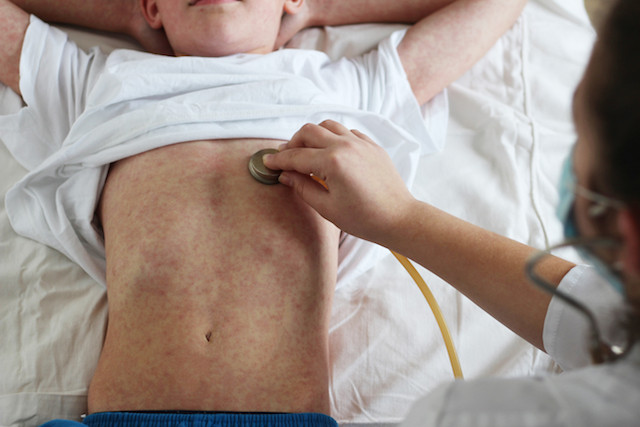Measles cases in Europe tripled between 2017 and 2018; the rate increased by 1,893% between 2016 and 2018. Yet health authorities said 90% of the population had received the full two-dose measles vaccination. The target is 95%.
The World Health Organization Regional Office for Europe said on 7 February:
“Measles killed 72 children and adults in the European Region in 2018. According to monthly country reports for January to December 2018 (received as of 1 February 2019), 82,596 people in 47 of 53 countries contracted measles. In countries reporting hospitalization data, nearly 2/3 (61%) of measles cases were hospitalized. The total number of people infected with the virus in 2018 was the highest this decade: 3 times the total reported in 2017 and 15 times the record low number of people affected in 2016.”
Luxembourg had 4 reported measles cases last year, according to the WHO data (PDF). The grand duchy also had 4 cases in 2017.
The vast majority of patients (92%) came from 10 nations.
Ten countries with highest numbers of measles cases in WHO European Region, January-December 2018:
- Ukraine: 53,218
- Serbia 5,076
- Israel: 2,919
- France: 2,913
- Italy: 2,517
- Russia: 2,256
- Georgia: 2,203
- Greece: 2,192
- Albania: 1,466
- Romania: 1,087
These countries had “suboptimal immunization coverage”, said the WHO.
Katrina Kretsinger, the lead measles expert at the WHO, was quoted by Science magazine as saying:
“The root cause of the measles outbreaks… is a failure to adequately vaccinate.
“Many people in many countries remain susceptible, and large pockets of susceptible persons can lead to large outbreaks.”
Another cause is late vaccination of the required second dose. Science magazine said that, “Typically, children are vaccinated around their first birthday and again before starting school.”
